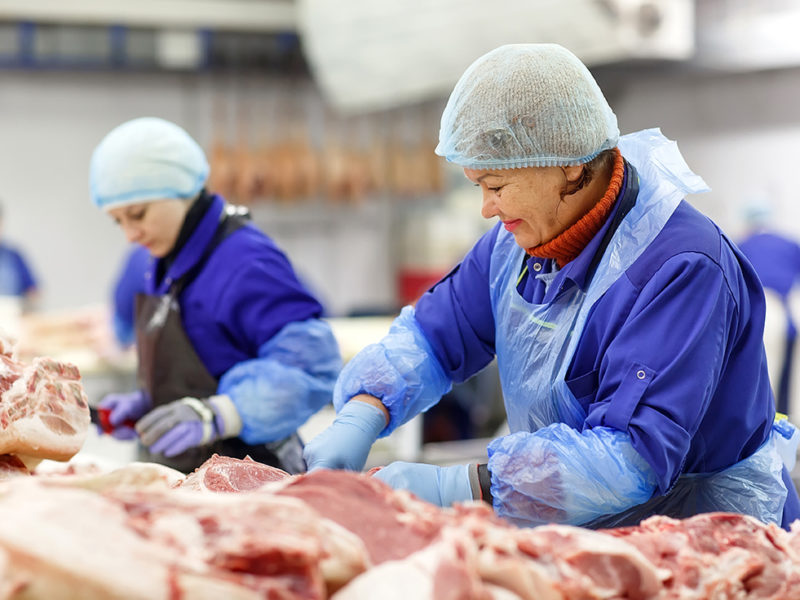KAMLOOPS – Provincially licensed abattoir operators have been put on notice that regular shifts for provincial meat inspectors must not exceed seven hours a day unless authorized by the province.
“I am asking that all slaughter establishment operators adhere strictly to the scheduled inspection services, which do not exceed seven hours per day,” Gavin Last, executive director of the province’s Food Safety and Inspection Branch, wrote in a letter to all provincially licensed slaughter plants on February 25.
Any overtime now requires Last’s personal, written authorization.
The inspectors are present for the duration of the slaughter process at class A and B plants to ensure food safety requirements are met. While their services cost BC abattoirs nothing, unlike in some other jurisdictions, it is a significant cost the province.
“Overtime hours represent a significant pressure on the meat inspection program’s annual budget,” Last wrote. “One way we can keep the cost of service predictable and affordable is to eliminate unnecessary overtime for [BC] Ministry of Agriculture meat hygiene inspectors.”
The letter came a week after the February 18 provincial budget, which slashed $2.3 million in funding from the agriculture science and policy budget. The funding improves “public health protection and consumer and retail confidence in the safety of British Columbia’s meat, seafood, and agrifood products through inspection.”
Last’s letter caught industry by surprise.
Nova Woodbury, executive director of the BC Association of Abattoirs, said the ministry didn’t consult industry on the directive.
“There was no consultation, no prior warning that this was going to be mandated,” she says. “The ministry budget has been cut and I get that, but this would have been less of a surprise to our members if we had worked together.”
Bonnie Windsor, assistant manager at Johnston’s Meats in Chilliwack, the largest provincially inspected meat processors in BC, had difficulties with the immediacy of the letter.
“I have a union contract that has an eight-hour shift for my 120 staff,” says Windsor. “It will take time for us to look at our entire operation and change staff and process flows.”
She also has animal welfare concerns.
“When you are dealing with live animals, stopping right at seven hours is not always an option,” she explains.
She notes that many meat processors in the province often run on weekends and statutory holidays in the run-up to holidays to meet demand.
“Johnston’s has not typically had issues with capacity and being able to service small individual custom farmers,” she notes. “However, with this change, it will negatively affect our ability to service them.”
But Woodbury and Windsor, who also serves as president of the abattoirs association, were able to meet with Last in early March and clear up some misunderstandings.
“Last did clarify that he does not expect reduction in overtime overnight,” Windsor says. “But plants cannot consider overtime to be a given and need to find efficiencies and spend responsibly.”
The meeting was able to clarify that the seven-hour shift does not include travel time for the inspector to and from the plant. They were also able to establish the difference between “operational overtime” and “planned overtime.”
“If a half-hour is required at the end of a day to finish with our animals, he is fine with that,” says Windsor. “As long as it is within reason and not a daily occurrence.”
However, plants need to give notice for planned overtime during busy seasons as early as possible, with a direct request to Last.
“The ministry does not have an issue with planned overtime at busy times of the year,” says Windsor. “But they will have little tolerance for overtime caused by poor planning or overbooking.”
Woodbury says she has no problem with improving efficiencies, but she hopes it does not affect an industry that is already struggling with capacity and staffing issues.
“I am disappointed that every effort of the current government does not appear to support the licensed and inspected abattoirs, but rather puts up more barriers,” she says. “The majority of the inspected abattoirs in BC are small rural businesses that support local producers and the agriculture community as a whole.”
Despite extensive review by the ministry, the industry has yet to receive guidance on its future direction.
A consultation in spring 2018 regarding Class D and E slaughter licences and produced a 96-page report.
The legislature’s Select Standing Committee on Agriculture, Fish and Food conducted hearings in June 2018 and released a 37-page report in September 2018 that included 21 recommendations for the industry.
In the summer of 2019, the ministry sought feedback from local governments on whether more D-class establishments were needed in the province, and then extended the deadline to October 2019. The ministry has yet to release the results of that consultation, and the lack of direction disappoints Woodbury.
“I hope that this does not deter new inspected meat plants from opening or existing plants to increase their capacity,” she says. “The demand for safe, local meat from BC consumers is growing.”


 Funding will help farmers address nutrient runoff
Funding will help farmers address nutrient runoff